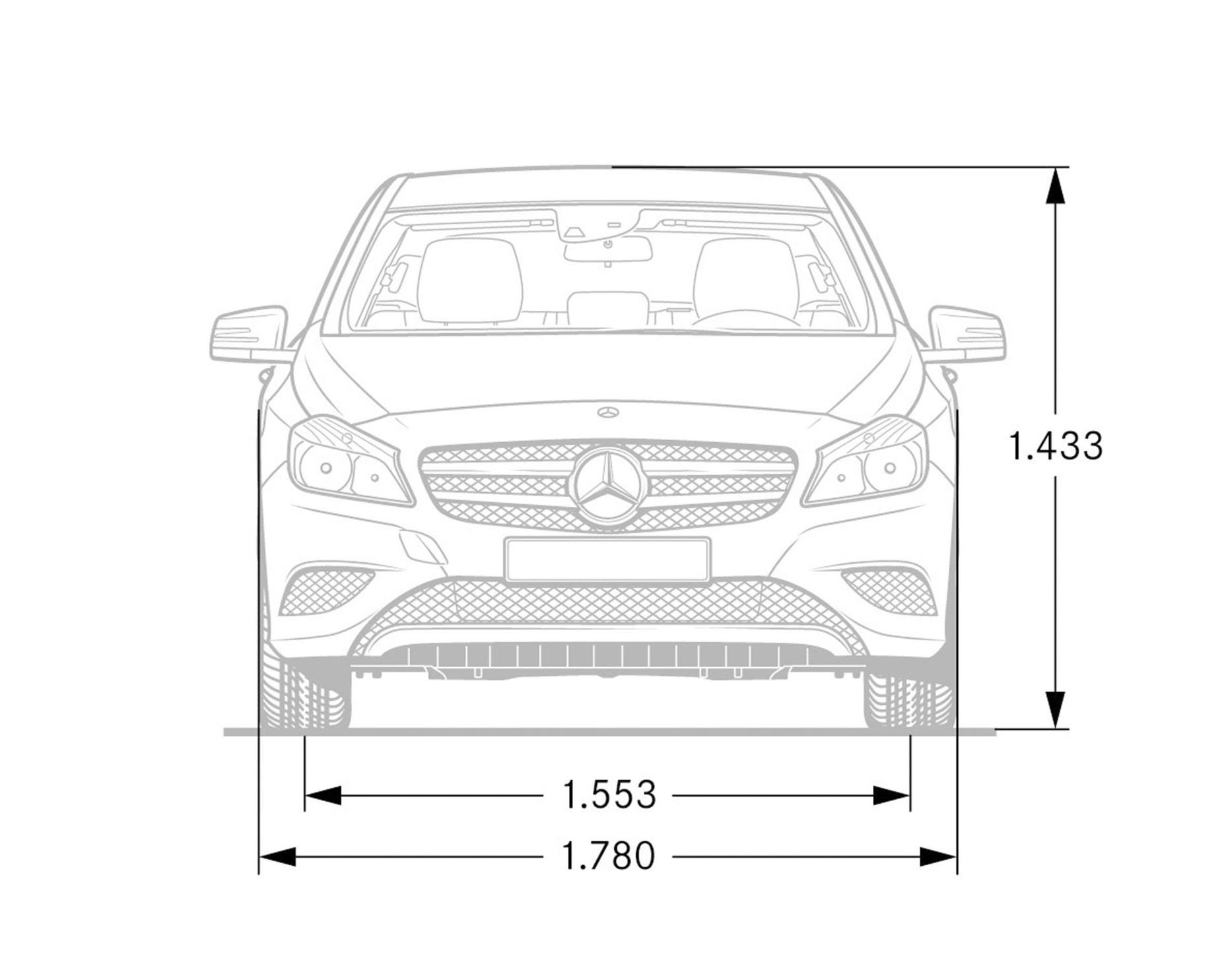The chassis and suspension Agility and refined sportiness

Refined sportiness means maximum agility combined with the sense of safety, unspoilt driving stability and high levels of ride comfort which are all typical of the brand. The suspension of the new A-Class has a four-link rear axle, electromechanical power steering with assistance functions and ESP® with “Extended Traction Control” (XTC). During development, the suspension experts made intensive use of simulations and the driving simulators at the Mercedes development centre in Sindelfingen as part of the so-called digital ride and handling test.
The preconditions for achieving dynamic handling are excellent in the
. This is because compared with its predecessor the centre of gravity (40 mm lower) and seating position (178 mm lower) has been reduced significantly. A new feature is the four-link rear axle: forces are absorbed by three control arms and one trailing arm per wheel. This means that longitudinal and lateral dynamics are virtually independent of one another. Wheel carriers and spring links are made of aluminium to reduce the unsprung masses. The goal was to achieve high lateral agility with high driving stability thanks to small sideslip angle on the rear axle.

Three chassis and suspension set-ups are available: the comfort suspension and optional sports suspension for sporty yet comfortable handling (in conjunction with the Dynamic Handling package or the AMG Sport equipment line). In addition, the A 250 Sport has a sporty, “engineered by AMG” high-performance suspension. Altogether this results in low dynamic rolling behaviour and low start-off pitch angle. Furthermore, the vehicle also has a reduced tendency to understeer in the higher lateral acceleration range: the driver is therefore able to control changes in direction with low steering input but high steering precision. When accelerating out of bends taken at speed, the tendency to understeer is reduced even further by “Extended Traction Control” (XTC): with this function, ESP® provides support in the form of directional stability by generating a yaw moment on the front and rear wheels located on the inside of the bend.
Steering: mechanical with electric assistance
The electromechanical steering of the A-Class has been redesigned. The electric motor of the servo assistance system is now located directly on the steering gear as a dual pinion EPS system. The steering system makes an important contribution to the vehicle’s overall efficiency, as the steering assist function only requires energy when steering actually takes place. A Direct-Steer system is available in combination with the Dynamic Handling package or AMG Sport equipment line. This provides a noticeably more direct steering ratio over the turning angle thanks to the variable ratio, and enhances the vehicle’s handling and agility substantially. The steering conveys a high sense of safety, as the driver experiences a consistent and precise response to all steering movements.
The electric power steering also enables various steering assistance functions which are activated by the ESP® control unit. These include:
- Countersteering in case of oversteering
- Corrective steering when braking on road surfaces offering different levels of grip (split-fraction braking)
- Mitigating the extent to which the front-wheel drive influences
the steering - Compensating crosswind and road gradients
- The electric power steering also makes Active Park Assist possible.
With all engine variants, the A-Class comes with disc brakes on all wheels. The callipers on the rear axle and the brake boosters are made of aluminium. A particularly convenient feature is the HOLD function, which is familiar from the larger model series: when stopping, for example at traffic lights, the driver merely has to press the brake pedal slightly more firmly and the brake will remain engaged until he moves off again. The brake is released automatically when the driver steps on the accelerator. On versions with manual transmission, the Hill Hold function automatically prevents the vehicle from rolling back unintentionally when starting on a slope.

The A-Class is equipped with an electric parking brake, which operates by means of actuator motors acting on the callipers of the rear axle. The parking brake is activated via a button under the light switch on the left of the dashboard. This creates additional space in the centre console, as the handbrake lever is no longer required. When the button is pressed at speeds of over four km/h, the parking brake acts as an emergency brake, activating all four wheel brakes via the ESP®‘s hydraulic unit.
In conjunction with the 7G-DCT automatic transmission, the parking brake offers a particularly convenient mode of functioning: when the driver accelerates sufficiently after fastening their seat belt, the parking brake is released automatically.


